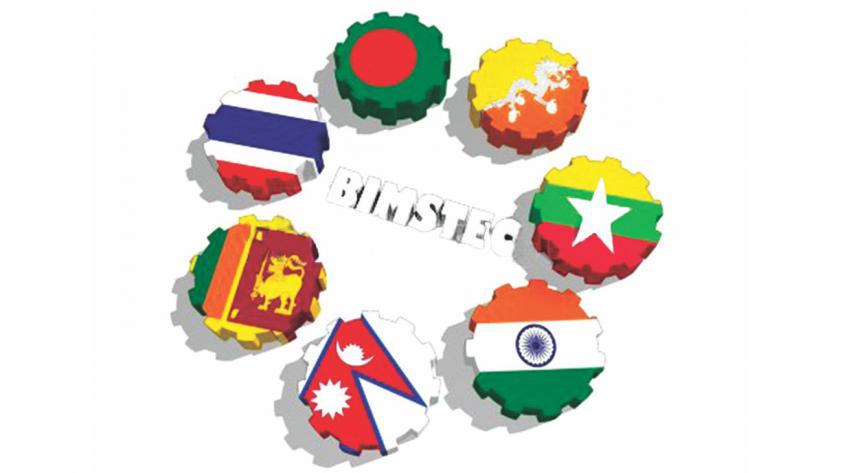Wither BIMSTEC FTA
Daily Star, Bangladesh
Wither BIMSTEC FTA
By Md. Rizwanul Islam
5 September 2015
Members of the Trade Negotiating Committee of the Bay of Bengal Initiative for Multi-Sectoral Technical and Economic Cooperation (BIMSTEC), a regional bloc of Bangladesh, Bhutan, India, Myanmar, Nepal, Sri Lanka, and Thailand, are going to meet in Bangkok between 7-9, September 2015, for working on a functional Free Trade Agreement (FTA) among member countries. BIMSTEC’s free trade agenda is nothing new; a framework agreement for FTA was signed way back in 2004 but nothing concrete is yet to happen. And perhaps the inertia is for good reasons and with positive effects.
If we look at the preferential trade agreements already in force between and among these countries, we would probably have a clear sense as to why the proposed FTA has not materialised for over a decade. Five of these seven countries (excluding Myanmar and Thailand) are already parties to preferential trade agreements under the auspices of the South Asian Association for Regional Cooperation (SAARC). Thailand and Myanmar are already part of the preferential market access regime of the Association of Southeast Asian Nations (ASEAN).
India, the largest economy of this group of seven countries, also has a preferential trade agreement with members of the Association of South East Asian Nations (ASEAN) and its manufacturers already enjoy preferential market access in Myanmar and Thailand. Since preferential trade agreements mean reciprocal market entry benefits, manufacturers from Myanmar and Thailand enjoy market access benefits in India too. Aside from preferential trade agreements under SAARC, it also has bilateral preferential trade agreements with Bhutan, Nepal, and Sri Lanka. Thus, while BIMSTEC may have something to offer on other fronts, it is not clear how much it can deliver on the trade front.
Trade analysts generally differ on the impact of FTAs (as they are somewhat misleadingly referred to in popular parlance) or preferential trade agreements but even the most enthusiastic proponents of preferential trade agreements concede that these agreements may have significant unintended costs. Many laypersons may not be aware that what is typically touted as a ’FTA’ has often much less to do with free trade and more to do with preferential trade. While a FTA would provide for freer flow of goods (and these days, more often than not, services as well) between its signatory countries, manufacturers from third parties would typically lose their market share simply because their goods would be deprived of the preferential import tariff enjoyed by manufacturers of FTA parties. Thus, an efficient manufacturer may lose its market share to a less efficient one.
A particular problem with preferential trade agreements is a complex set of rules known as ’rules of origin’. Most preferential trade agreements use rules of origin to determine which imported goods from manufacturers of its counterparts would actually enjoy tariff concessions. Primary goods or goods manufactured in a single country using domestic inputs only, pose no issues regarding the rules of origin. However, in today’s economically inter-connected world, there are few goods which are fully manufactured in a single country or with all inputs from a single country. For goods produced using inputs of multiple countries, typically a rules of origin would require that a defined portion of the value of total inputs must be sourced from FTA member countries. And such a rule is just one of many more complex rules and the rules vary from product to product.
For this reason, the rules of origin increase complexities for manufacturers as well as for customs officials. Manufacturers willing to enjoy preferential market access would have to strategise how to source inputs for their products so that their finished products qualify under the rules of origin. The process can be so complex that sometimes reportedly the manufacturers simply pay the normal tariff rate applicable to imports from all countries and forego the preferential tariff, which they could have enjoyed if they bothered to comply with the formalities under the rules of origin of the FTA. Customs officials in a similar vein would have to assess whether goods imported from an FTA partner country qualifies under the rules of origin of the respective preferential trade agreement. This task can be quite tedious and resource consuming.
A BIMSTEC FTA would surely be an achievement for members of the Trade Negotiating Committee, as they would have an achievement in their portfolio.
But there is serious doubt, if concluded, how much trade - let alone truly net-welfare enhancing trade - would take place under that FTA. Thus, for really delivering on the trade front, instead of concluding a BIMSTEC FTA, BIMSTEC member countries may do well to work for strengthening the existing FTAs within the SAARC and ASEAN regime (this is particularly important for SAARC member countries as compared to the ASEAN, as progress in the SAARC is quite lacklustre). Or perhaps, they could work for a greater trade bloc involving all members of SAARC and ASEAN and create a much bigger market. In current geopolitics, the latter idea may be unthinkable, but the unthinkable may not remain so forever.
The writer is an Assistant Professor of Law at School of Law, BRAC University.






